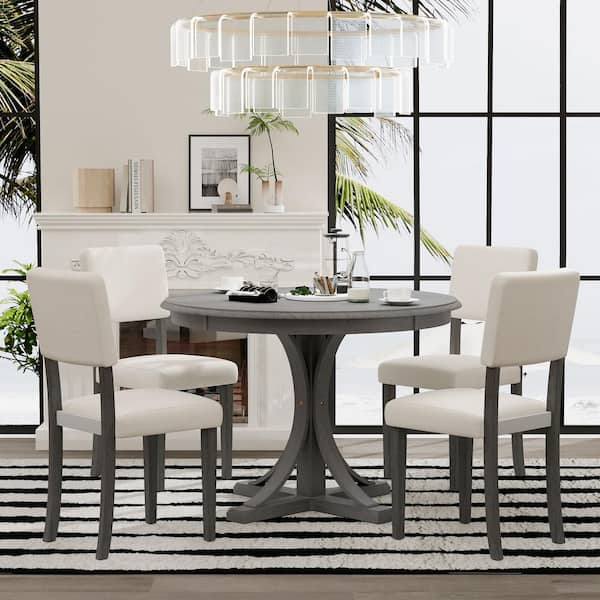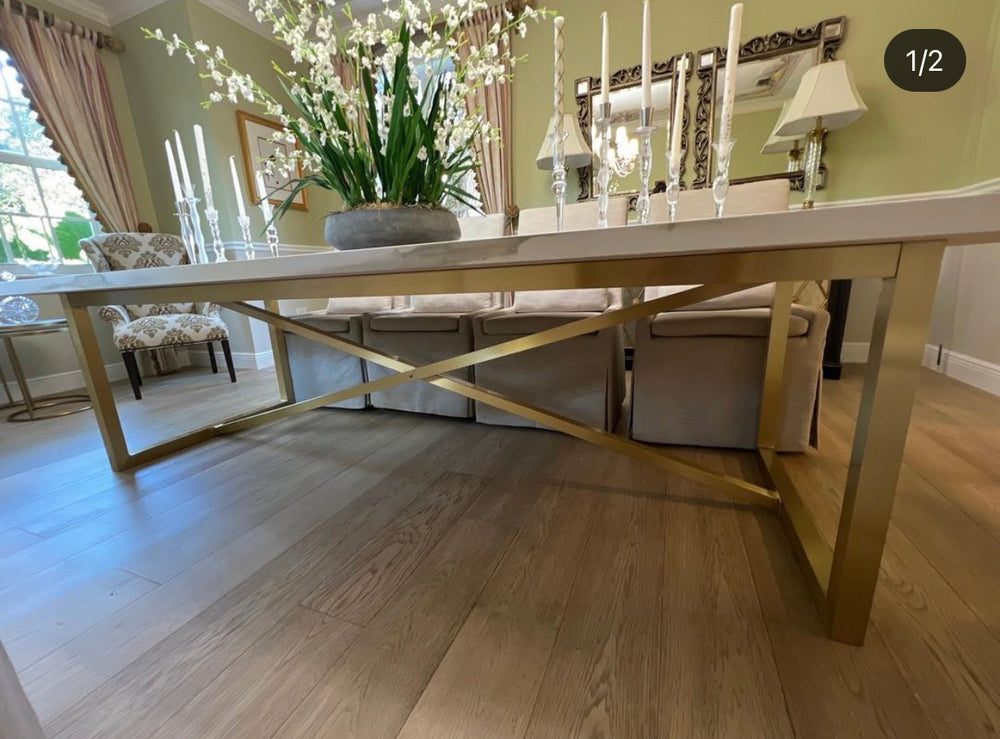Transform Your Dining Space with Stylish Dining Room Table Legs
Transform Your Dining Space with Stylish Dining Room Table Legs
Blog Article
Specialist Tips for Installing Eating Space Table Legs for Maximum Security
When it concerns setting up dining area table legs, accomplishing optimum security is critical for both performance and aesthetics. The process starts with picking the best materials and equipment, complied with by careful placement and consideration of weight circulation. Each action plays a critical duty in guaranteeing that the finished product endures daily use without compromising safety or style honesty. Comprehending the nuances of these aspects can considerably influence the total result. What certain strategies can improve stability even better?
Choose the Right Legs
When choosing the ideal legs for your eating space table, it is vital to take into consideration both capability and aesthetics. The legs you pick will substantially affect the overall design and security of the table. Evaluate the table's meant use; if you expect frequent events, sturdier legs, such as those made from strong timber or steel, may be much more suitable, as they use increased durability and support.
Basic eating tables generally range from 28 to 30 inches in elevation, so ensure the legs align with this criterion for convenience. Tapered legs can add a contemporary touch, while turned legs may convey a much more traditional aesthetic.

Select Appropriate Hardware
How can the appropriate hardware boost the stability and longevity of your eating room table? The choice of ideal equipment is important to guaranteeing that the legs of your table are safely affixed and able to endure regular use. High-grade screws, bolts, and braces offer the required toughness to support the weight of the table, in addition to any extra tons placed upon it throughout gatherings or dishes.
When choosing screws, choose those made from durable materials such as stainless-steel or brass, which withstand rust and keep honesty in time. The length of the screws is equally crucial; they should pass through deeply right into the table's framework without compromising integrity. For bolted links, consider making use of lock washing machines to avoid loosening because of vibration or motion.
Additionally, using edge braces can include additional support, specifically for larger tables or those with larger tops. These braces distribute weight uniformly and assist maintain the table's form. Making certain that the equipment you choose is suitable for the specific products of your table will certainly better boost its general stability and long life, enabling you to enjoy your eating experience for many years to come.
Ensure Proper Placement
Appropriate alignment of dining-room table legs is important for both visual charm and practical security. Misaligned legs can bring about an uneven tabletop, which might not only be aesthetically uninviting but additionally jeopardize the table's functionality. To achieve ideal alignment, start by measuring the range from the table's edges to the leg attachment factors. This guarantees that each leg is positioned equidistant from More Bonuses the sides, creating a well balanced look.
Make use of a degree throughout installation to verify that each leg is perpendicular to the tabletop. This step is vital, as also minor disparities can intensify into considerable security issues over time. It is suggested to mark the desired leg settings on the bottom of the table with a pencil or masking tape prior to securing them. This practice functions as a visual guide, permitting changes as required.
In addition, ascertain the placement after the initial screws are tightened up, as modifications may be necessary before fully protecting the hardware. By focusing on proper placement, you not just improve the table's total layout however also make certain that it remains functional and stable for several years to find.

Take Into Consideration Weight Distribution
After guaranteeing appropriate positioning of the dining-room table legs, it is essential to take into consideration weight circulation to enhance stability and functionality. dining room table legs. Correct weight circulation is important in stopping ensuring and tottering that the table can support its intended lots without danger of tipping or collapsing
When positioning the legs, guarantee they are positioned at equivalent distances from the facility of the table to uniformly distribute the weight throughout the structure. Consider the weight of the tabletop and any type of items that will often rest on it, such as tabletop devices or ornamental pieces. Tables with much heavier surface areas ought to preferably have legs located closer to the edges, as this makes best use of the base of support and decreases the risk of instability.
Additionally, if the table is meant for use in a high-traffic location, consider making use of much heavier products for the legs or adding supporting components, such as cross-bracing or a lower rack - dining room table legs. These adjustments can assist preserve balance and prevent shifting throughout use. Eventually, a well-considered weight circulation approach will dramatically boost the table's overall efficiency, ensuring it remains a eye-catching and practical centerpiece for your eating space
Test Stability Prior To Use
Examining the security of the eating area table before use is an essential step that needs to not be neglected. Making sure that the table is safe and secure and stable can prevent accidents and prolong the lifespan of the furniture. Begin by applying gentle stress to various factors on the table surface. Lower on the facility and afterwards along the sides, changing or observing any kind of wobbling. Recognize the legs or joints that may call for adjustment. if the table reveals instability.
Following, examine that all screws and bolts are tightened up correctly. Loosened links can lead to instability and possible damage with time. If necessary, make use of wood adhesive on joints to enhance stability, ensuring to enable adequate drying out time.

Verdict
In verdict, the installation of eating area table legs requires mindful factor to consider of products, weight, positioning, and hardware circulation to achieve optimum explanation security. By choosing top quality fasteners and tough legs, making sure exact alignment, and distributing weight uniformly, the architectural stability of the table can be considerably enhanced. Carrying out a stability examination prior to regular usage better makes sure that the table will certainly endure day-to-day my site stress, therefore offering a secure and reliable eating experience.
When it comes to setting up eating room table legs, achieving maximum security is extremely important for both functionality and appearances. The legs you pick will significantly affect the overall style and stability of the table (dining room table legs). Conventional dining tables typically range from 28 to 30 inches in height, so make sure the legs align with this requirement for convenience.Appropriate alignment of eating space table legs is crucial for both aesthetic allure and functional security.In verdict, the setup of eating space table legs requires careful consideration of materials, hardware, alignment, and weight circulation to achieve optimum stability
Report this page